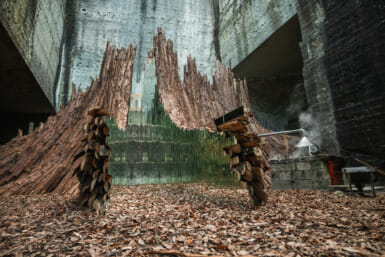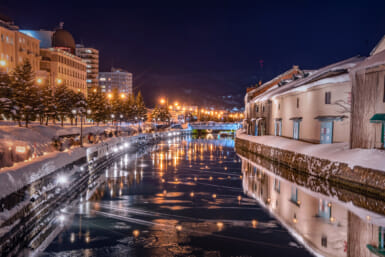Just to the west of Tokyo, you’ll find a trio of regions that are collectively called the Fuji-Hakone-Izu area. Each of the three regions is full of interesting natural and cultural activities and can be easily accessed from the metropolis.
Using the Fuji Hakone Pass
If you intend to travel to the Fuji and Hakone areas, it makes sense to get a Fuji Hakone Pass. This special pass gives holders free access to eight buses, boats, ropeways and other modes of transportation in the Hakone area. It also lets you take buses and trains in the Fuji area. The pass lasts for three days, and you can use the ticket as much as you like during that time. On top of that, the pass even gets you special discounts to various facilities in the area.
It’s also nice to know that a portion of the ticket sales will go toward the conservation of Mount Fuji. The mountain is climbed by many locals and tourists every year, so requires a lot of maintenance and funding for that.
For more information visit the official page for the Fuji Hakone Pass.

Fuji Area
Home to Japan’s iconic Mount Fuji, the Fuji area is known for its beautiful nature and culture, with one of the most notable highlights being the Fuji Five Lakes, made up of the Yamanaka, Kawaguchi, Saiko, Shoji and Motosu lakes.
Surrounding Mount Fuji, each lake has its own distinct characteristics and incredible views year-round. While it’s easiest to get that perfect shot of Mount Fuji during the clear skies of winter, each season offers something different, like cherry blossoms in spring or fiery foliage in the fall.
If you visit during spring, a must-see is the Fuji Shiba-sakura Festival (held from mid-April to May) at the Fuji Motosuko Resort. The star of the show is the flowering plant known as moss phlox. In vibrant pinks of different shades, it covers the ground as far as the eye can see. The lively colors will lift your spirits and put a spring in your step.
If hiking is more your style, in the summer you can climb one of Mount Fuji’s different trails, or even conquer “Zero Fuji,” a course that runs from sea level up to Mount Fuji’s peak. It’s a tough hike and beginners will be happy to know that most climbers take a car or bus to a point halfway up the mountain and start from there.

Hakone Area
Moving on to Hakone, where one of the area’s most recognizable scenes is the view of Lake Ashi. On a clear day, you might catch all three of the lake’s signature features: the red torii gate emerging from the water, the pleasure boat with pirate-ship stylings, and Mount Fuji in the background. As the evening mist rolls in, as it so frequently does in this mountainous town, it adds atmosphere to spiritual sites like that marked by the red torii gate, Hakone Shrine.
In the past, mountains were sacred and people worshipped them with a sense of awe, and Hakone became a place where ascetic monks would retreat in the region’s numerous mountains.
Hakone Shrine was built during the Nara Period (710–794). Explore this impressive power spot by climbing 89 steps to be greeted by a nine-headed dragon fountain.
Hakone offers many walking and hiking trails. You can also visit the otherworldly area of Owakudani, where white smoke billows up from the volcanic activity that continues here after the Hakone volcano erupted 3,000 years ago. For lighter walking, the Sengokuhara area offers a peaceful stroll through Japanese pampas grass, and the walking and hiking routes around Lake Ashi are great to explore.
You can also see what Hakone has to offer via the Hakone Tozan Railway, Hakone Ropeway and Hakone Tozan Bus tours, which are included in the Fuji Hakone Pass.

Izu Area
While Fuji and Hakone are characterized by their mysterious mountain scenes and luscious forests, Izu is home to beautiful sandy beaches and lively waterfalls.
One of the key charms of Izu is how relatively uncrowded and untouched everything is. The further you head out along the peninsula, the more there is to explore. Those looking for adventure can go diving and snorkeling in the clear blue waters on either side of the peninsula in Sagami Bay or Suruga Bay, or head to one of the hiking trails, like the Kawazu Seven Waterfalls Trail.
But if it’s rest and relaxation you seek, in summer you’ll want to head to one of the beaches. Relax on the soft sands of Ito Orange Beach on the peninsula’s east, or marvel at the ocean rock formations off Norihama beach on the west side. In the winter, rest your body in the soothing hot spring waters of Atami.
If you’re looking for something more than beaches and hiking, you can visit Izu Shaboten Zoo, the Shuzenji bamboo corridor, or one of the various local shrines.

Photo by Kinryuzan Senso-ji
Things To Do in Tokyo
After exploring the cultural wonders of the Fuji-Hakone-Izu area, the neon lights and exciting modern features of Tokyo are quite a contrast. But even in the big city there are unique ways to experience tradition if you know where to go.
One of the most famous spots for exactly that is Sensoji Temple in Asakusa. The temple has a long history, and is known for its bustling, long entranceway that is lined with various food and souvenir stalls. Here you can enjoy an array of traditional-style gifts and street food as you make your way to the large pagoda and main temple at the other end.
The whole area of Asakusa is an interesting oasis of old-style Japan in central Tokyo, so you can find other traditional shops here and even wear a kimono as you walk about the town.

For traditional food in a grander style, venture to Shinjuku for the elegant stylings of Kozue. The restaurant is located in Park Hyatt Tokyo, and offers modern interpretations of Japan’s traditional cuisine. Indulge in an elegant, multi-course lunch or dinner and savor the very best of the seasons.
Located on the 40th floor of Park Hyatt Tokyo, Kozue’s huge windows afford a stunning view that, on a sunny day, includes Mount Fuji. Here, you can sit back and reflect on your cultural — and culinary — adventures so far in Japan, and as night falls and the lights of Tokyo’s sprawling metropolis shine brightly below you, plan what is yet to come.
Discover Kanagawa, Shizuoka and Yamanashi
For more travel destinations and ideas, check out the following travel guides:
Those keen on a video tour can also watch the short series published by Ask Japanese:
Sponsored Post









